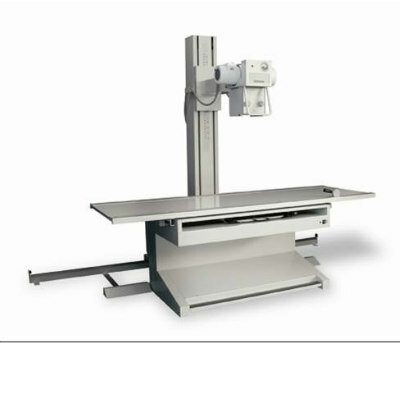Novel Radiotracer Superior at Diagnosing Coronary Artery Disease in Obese Patients
|
By MedImaging International staff writers Posted on 06 Jul 2023 |

Individuals with obesity often suffer from medical conditions such as diabetes, high cholesterol, and high blood pressure, predisposing them to coronary artery disease (CAD). Therefore, imaging obese patients for CAD is crucial. However, the body shape of obese individuals often complicates the imaging process, resulting in subpar image quality and diagnostic performance, despite requiring a higher radiation dose. Now, new research reveals that a novel PET perfusion radiotracer, 18F-flurpiridaz, can diagnose CAD in obese patients with superior sensitivity and specificity compared to 99mTc-SPECT myocardial perfusion imaging (MPI). In the study, 18F-flurpiridaz PET MPI generated images at a lower radiation dose than 99mTc-SPECT MPI and demonstrated similar performance in both obese and non-obese patients.
The research findings presented by investigators at the Icahn School of Medicine at Mount Sinai (New York, NY, USA) report on a pre-specified subgroup of a phase III multicenter trial of 18F-flurpiridaz. The study enrolled a total of 604 patients with suspected CAD from 48 sites in the United States, Canada, and Europe. Patients underwent either one-day rest-stress 18F-flurpiridaz PET MPI or one- or two-day rest-stress 99mTc-SPECT MPI, followed by invasive coronary angiography. Three experts, blinded to clinical and invasive coronary angiography data, read the MPI images. Sensitivity and specificity for 18F-flurpiridaz PET MPI and 99mTc-SPECT MPI were calculated and then compared between PET and SPECT MPI among both obese and non-obese groups.
Out of the 578 patients with evaluable studies, 298 (51.6%) were classified as obese. 18F-flurpiridaz PET MPI demonstrated a sensitivity of 77% and a specificity of 67% in diagnosing significant CAD, whereas 99mTc-SPECT MPI yielded a sensitivity of 69.2% and specificity of 61.9%. The sensitivity, specificity, and accuracy of 18F-flurpiridaz PET MPI remained similar across both non-obese and obese sub-groups. The researchers also highlighted that 18F-flurpiridaz could substantially increase the availability and accessibility of PET myocardial perfusion imaging worldwide.
“We know that PET perfusion is the best noninvasive imaging modality for CAD; however, thus far, the availability of stress cardiac PET myocardial perfusion imaging is limited across the world, as both significant investment for the generator and large patient volume are required for it to make economic sense,” said Krishna Patel, MD, assistant professor of medicine and cardiology at the Icahn School of Medicine at Mount Sinai. “With availability as a unit dose, 18F-flurpiridaz can disrupt this space, as suddenly now most—if not all—centers that offer PET for oncology can now perform stress perfusion studies.”
Related Links:
Icahn School of Medicine at Mount Sinai
Latest Nuclear Medicine News
- New SPECT/CT Technique Could Change Imaging Practices and Increase Patient Access
- New Radiotheranostic System Detects and Treats Ovarian Cancer Noninvasively
- AI System Automatically and Reliably Detects Cardiac Amyloidosis Using Scintigraphy Imaging
- Early 30-Minute Dynamic FDG-PET Acquisition Could Halve Lung Scan Times
- New Method for Triggering and Imaging Seizures to Help Guide Epilepsy Surgery
- Radioguided Surgery Accurately Detects and Removes Metastatic Lymph Nodes in Prostate Cancer Patients
- New PET Tracer Detects Inflammatory Arthritis Before Symptoms Appear
- Novel PET Tracer Enhances Lesion Detection in Medullary Thyroid Cancer
- Targeted Therapy Delivers Radiation Directly To Cells in Hard-To-Treat Cancers
- New PET Tracer Noninvasively Identifies Cancer Gene Mutation for More Precise Diagnosis
- Algorithm Predicts Prostate Cancer Recurrence in Patients Treated by Radiation Therapy
- Novel PET Imaging Tracer Noninvasively Identifies Cancer Gene Mutation for More Precise Diagnosis
- Ultrafast Laser Technology to Improve Cancer Treatment
- Low-Dose Radiation Therapy Demonstrates Potential for Treatment of Heart Failure
- New PET Radiotracer Aids Early, Noninvasive Detection of Inflammatory Bowel Disease
- Combining Amino Acid PET and MRI Imaging to Help Treat Aggressive Brain Tumors
Channels
Radiography
view channel
Novel Breast Imaging System Proves As Effective As Mammography
Breast cancer remains the most frequently diagnosed cancer among women. It is projected that one in eight women will be diagnosed with breast cancer during her lifetime, and one in 42 women who turn 50... Read more
AI Assistance Improves Breast-Cancer Screening by Reducing False Positives
Radiologists typically detect one case of cancer for every 200 mammograms reviewed. However, these evaluations often result in false positives, leading to unnecessary patient recalls for additional testing,... Read moreMRI
view channel
PET/MRI Improves Diagnostic Accuracy for Prostate Cancer Patients
The Prostate Imaging Reporting and Data System (PI-RADS) is a five-point scale to assess potential prostate cancer in MR images. PI-RADS category 3 which offers an unclear suggestion of clinically significant... Read more
Next Generation MR-Guided Focused Ultrasound Ushers In Future of Incisionless Neurosurgery
Essential tremor, often called familial, idiopathic, or benign tremor, leads to uncontrollable shaking that significantly affects a person’s life. When traditional medications do not alleviate symptoms,... Read more
Two-Part MRI Scan Detects Prostate Cancer More Quickly without Compromising Diagnostic Quality
Prostate cancer ranks as the most prevalent cancer among men. Over the last decade, the introduction of MRI scans has significantly transformed the diagnosis process, marking the most substantial advancement... Read moreUltrasound
view channel
Deep Learning Advances Super-Resolution Ultrasound Imaging
Ultrasound localization microscopy (ULM) is an advanced imaging technique that offers high-resolution visualization of microvascular structures. It employs microbubbles, FDA-approved contrast agents, injected... Read more
Novel Ultrasound-Launched Targeted Nanoparticle Eliminates Biofilm and Bacterial Infection
Biofilms, formed by bacteria aggregating into dense communities for protection against harsh environmental conditions, are a significant contributor to various infectious diseases. Biofilms frequently... Read moreGeneral/Advanced Imaging
view channel
New AI Method Captures Uncertainty in Medical Images
In the field of biomedicine, segmentation is the process of annotating pixels from an important structure in medical images, such as organs or cells. Artificial Intelligence (AI) models are utilized to... Read more.jpg)
CT Coronary Angiography Reduces Need for Invasive Tests to Diagnose Coronary Artery Disease
Coronary artery disease (CAD), one of the leading causes of death worldwide, involves the narrowing of coronary arteries due to atherosclerosis, resulting in insufficient blood flow to the heart muscle.... Read more
Novel Blood Test Could Reduce Need for PET Imaging of Patients with Alzheimer’s
Alzheimer's disease (AD), a condition marked by cognitive decline and the presence of beta-amyloid (Aβ) plaques and neurofibrillary tangles in the brain, poses diagnostic challenges. Amyloid positron emission... Read more.jpg)
CT-Based Deep Learning Algorithm Accurately Differentiates Benign From Malignant Vertebral Fractures
The rise in the aging population is expected to result in a corresponding increase in the prevalence of vertebral fractures which can cause back pain or neurologic compromise, leading to impaired function... Read moreImaging IT
view channel
New Google Cloud Medical Imaging Suite Makes Imaging Healthcare Data More Accessible
Medical imaging is a critical tool used to diagnose patients, and there are billions of medical images scanned globally each year. Imaging data accounts for about 90% of all healthcare data1 and, until... Read more
Global AI in Medical Diagnostics Market to Be Driven by Demand for Image Recognition in Radiology
The global artificial intelligence (AI) in medical diagnostics market is expanding with early disease detection being one of its key applications and image recognition becoming a compelling consumer proposition... Read moreIndustry News
view channel
Bayer and Google Partner on New AI Product for Radiologists
Medical imaging data comprises around 90% of all healthcare data, and it is a highly complex and rich clinical data modality and serves as a vital tool for diagnosing patients. Each year, billions of medical... Read more





















